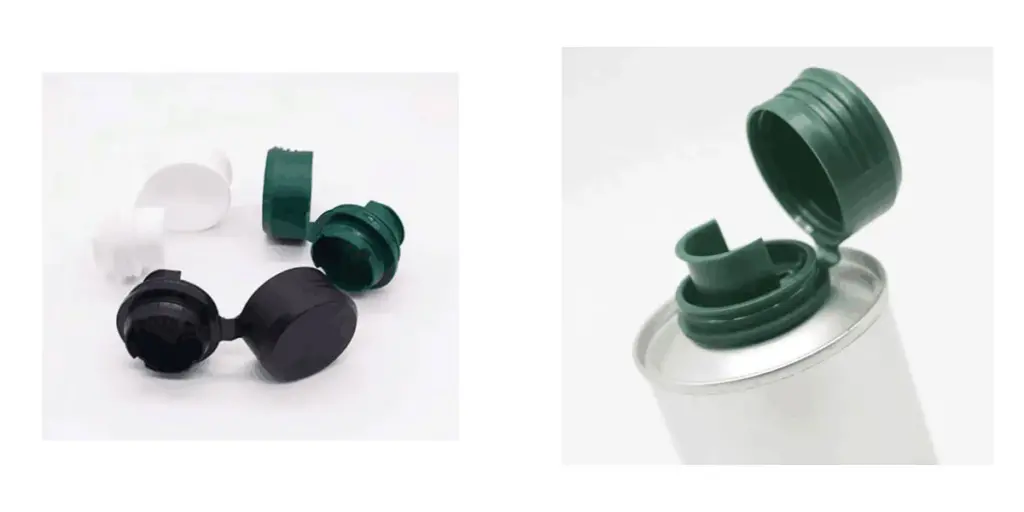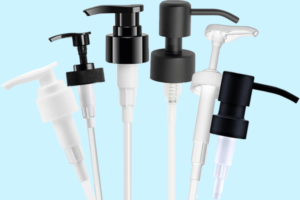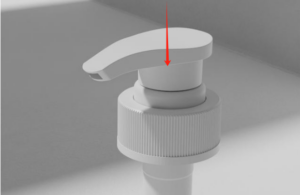When it comes to engine oil bottles, functionality and convenience are key. That’s where tampas come in. These ingenious little devices have revolutionized the way we access and dispense engine oil. With just a simple flick of the finger, the flip cap opens up, allowing for easy pouring and minimizing the risk of spills or leaks.
Not only do flip caps provide a practical solution, but they also offer a neat and clean look to the packaging, which is essential in maintaining a professional brand image. Whether you are a mechanic, a do-it-yourself enthusiast, or simply someone who wants to keep their engine running smoothly, flip caps are a game-changer.
Their user-friendly design makes them ideal for quick and hassle-free oil changes, saving you time and effort. Plus, their secure seal ensures that your oil remains fresh and contamination-free. Então, if you’re tired of struggling with messy pour spouts or wasted oil, it’s time to embrace the convenience of flip caps. Revolutionize your oil change experience with these simple yet effective caps.

Advantages of using flip caps in engine oil bottles
- 1. Convenience and ease of use: Flip caps provide a user-friendly experience, allowing for easy, one-handed opening and closing of engine oil bottles. This convenience is particularly beneficial for users who may have limited dexterity or need to operate the bottle while working on engines or machinery.
- 2. Reduced risk of spills and leaks: Flip caps feature a hinged design that provides a reliable seal when closed, preventing oil from leaking or spilling during storage, transporte, or handling. This helps to maintain a clean and organized workspace and prevents wastage of valuable engine oil.
- 3. Controlled dispensing: Flip caps allow for precise and controlled dispensing of engine oil. By flipping open the cap, users can easily pour or drip the desired amount of oil without the need for additional tools or funnels. This promotes accurate oil application, minimizing the risk of overpouring or underpouring.
- 4. Tamper-evident features: Many flip caps incorporate tamper-evident features, providing visual indicators if the bottle has been tampered with or opened previously. This enhances consumer confidence in the quality and integrity of the engine oil, ensuring that it reaches them in its original and untampered condition.
- 5. Improved product freshness: Flip caps create an airtight seal when closed, helping to preserve the freshness and quality of the engine oil. By preventing air and moisture from entering the bottle, the flip cap extends the shelf life of the oil, ensuring optimal performance and lubrication properties when used.
- 6. Diferenciação da marca: Using flip caps can differentiate engine oil brands on store shelves. These caps can be customized with different colors, formas, or branding elements, helping to create a unique and visually appealing packaging identity. This allows brands to stand out and attract potential customers, ultimately boosting sales and brand recognition.
Resumindo, flip caps offer several advantages when used in engine oil bottles, including convenience, reduced risk of spills and leaks, controlled dispensing, tamper-evident features, improved product freshness, and brand differentiation. By choosing flip caps for engine oil packaging, businesses can enhance user experience, protect the product’s integrity, and stand out in a competitive market.
The role of flip caps in preventing leakage and contamination
Flip caps play a crucial role in preventing leakage and contamination in various products, including beverages, itens de cuidados pessoais, e produtos químicos domésticos. In engine oil bottles specifically, flip caps provide a secure seal that prevents oil from spilling or leaking during storage, transporte, e manuseio.
The hinged design of flip caps creates a reliable barrier, effectively sealing the bottle and minimizing the risk of oil leakage. This is particularly important for engine oil, as any leakage can not only lead to messy and wasteful spills but also potentially damage the engine or machinery being lubricated.
Adicionalmente, flip caps help to prevent contamination of the engine oil. They serve as a protective barrier, keeping out dirt, destroços, and other contaminants that could potentially compromise the quality and performance of the oil. By maintaining a clean and uncontaminated environment within the bottle, flip caps ensure that the engine oil reaches the end-user in its original and untampered condition.
Além disso, flip caps often incorporate tamper-evident features, providing an added layer of protection against contamination and tampering. These features can include a breakable seal or a visible indicator that shows if the cap has been opened or tampered with. This gives consumers confidence in the integrity and safety of the engine oil, ensuring that they receive a product that meets their expectations.
Geral, flip caps are essential in preventing leakage and contamination in engine oil bottles. Their secure sealing capabilities and potential inclusion of tamper-evident features ensure that the oil remains protected and of high quality, ultimately enhancing consumer satisfaction and maintaining the performance of the engine or machinery.
Flip caps and their impact on product shelf life
Flip caps have a significant impact on product shelf life, particularly in perishable goods and products that are sensitive to air, umidade, or contamination. When used in packaging, flip caps provide an airtight seal that helps to preserve the freshness and quality of the product over time.
By creating a tight seal when closed, flip caps prevent air and moisture from entering the bottle or container. This barrier is crucial for products like beverages, molhos, and condiments, as exposure to air and moisture can lead to oxidation, spoilage, and a shorter shelf life. The integrity of the product is maintained, ensuring that consumers receive a fresh and untainted product every time they open the flip cap.
Além disso, tampas also play a role in preventing contamination. The seal created by the flip cap reduces the risk of external contaminants, such as dust, bactérias, or foreign particles, from entering the product. This is particularly important for products like pharmaceuticals, where maintaining a sterile environment is essential for the safety and effectiveness of the medication.
In addition to the physical barrier, flip caps can also incorporate additional features to enhance product shelf life. This can include the use of liners or gaskets that provide an extra layer of protection against air, umidade, or contamination. These added components further contribute to extending the product’s shelf life and ensuring its quality and efficacy.
Geral, by providing an airtight seal and minimizing the risk of contamination, flip caps significantly impact the shelf life of various products. Their role in preserving freshness, qualidade, and safety makes them a popular choice for manufacturers looking to maximize product longevity and meet consumer expectations for freshness and quality.
Considerations when choosing flip caps for engine oil bottles
Considerations when choosing tampas for engine oil bottles:
- Material compatibility: Engine oil can be corrosive or reactive with certain materials. It is important to ensure that the flip cap material chosen is compatible with the specific type of engine oil it will be used for. Compatibility testing should be conducted to prevent any potential reactions or deterioration of the flip cap that could compromise the integrity of the seal or contaminate the oil.
- Seal integrity: The flip cap should provide a reliable and secure seal to prevent leakage or spills. It should be able to withstand the pressure and temperature changes that engine oil bottles may experience during storage and transportation. Testing the seal integrity under various conditions is essential to ensure the cap meets the requirements for engine oil packaging.
- Tamper-evident features: Engine oil is a critical product where tampering can have serious consequences. Choosing flip caps with tamper-evident features, such as breakable seals or visible indicators, adds an extra layer of protection and reassurance to consumers that the oil has not been tampered with.
- Fácil de usar: Consider the ergonomics and functionality of the flip cap design. It should be easy to open and close, allowing for convenient one-handed operation. The cap should have a suitable grip and a smooth flipping mechanism to ensure ease of use for users, especially in environments where gloves may be worn.
- Branding opportunities: Flip caps can be customized and branded to enhance visual appeal and brand recognition. Consider incorporating branding elements or customization options that align with the overall packaging design and brand identity. This can help differentiate the product on store shelves and contribute to brand loyalty.
- Regulatory compliance: Ensure that the chosen flip cap design complies with safety requirements and regulations specific to engine oil packaging. This includes factors such as child-resistant design, proper labeling, and any other industry-specific standards that must be met.
By considering these factors when choosing tampas for engine oil bottles, businesses can select caps that provide a secure seal, user-friendly experience, tamper-evident features, and compliance with regulations, ultimately ensuring the integrity and safety of the engine oil.
Para concluir
Flip caps have proven their worth in engine oil packaging, offering convenience, leakage protection, controlled dispensing, tamper-proof functionality, enhanced product freshness and brand differentiation. With a focus on sustainable solutions and continued advancements in materials and manufacturing technologies, the future of clamshells in engine oil packaging looks promising. By staying ahead of consumer demands and industry trends, businesses can harness the power of well-designed clamshells to protect and enhance their engine oil products




